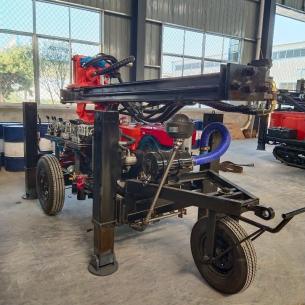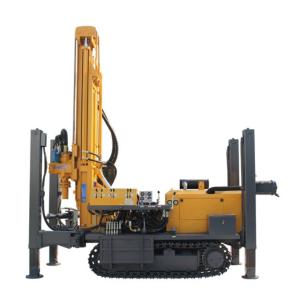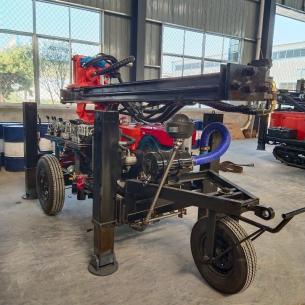DTH Drills: The Working Principles and Applications of Down-the-Hole Hammer Drilling Technology
In the underground drilling industry, DTH drilling rigs have become a vital technology due to their efficiency, flexibility, and reliability. DTH drilling technology plays a key role in mining, hydrological drilling, geological exploration, and construction. This article will comprehensively analyze the operating principles, core components, main types, and widespread applications of DTH drilling rigs, providing a deep understanding of the key aspects of this modern drilling technology.
Basic Concepts of a DTH Drill rig
A DTH drill, also known as a "down-the-hole drill" or "down-the-hole hammer drill" in Chinese, is a highly efficient rock drilling device. Unlike traditional rotary drilling, the DTH drill's impact mechanism—the DTH hammer—is mounted directly behind the drill bit and enters the hole with the drill bit. This design transfers impact energy directly to the rock at the bottom of the hole, significantly reducing energy loss and improving drilling efficiency and depth.
The core technical advantages of the DTH drilling rig include:
The impact energy is applied directly to the rock at the bottom of the hole, minimizing energy loss.
It is suitable for a wide range of geological conditions, from soft to extremely hard rock formations, and can be used efficiently.
It reduces drilling deviation, achieves high hole quality, and reduces subsequent work.
Its energy consumption is low, reducing operating costs by over 30% compared to traditional methods.
Comparison between DTH drilling rig and traditional drilling technology
Technical Parameters | DTH Drill Rig | Conventional Top Hammer Drill Rig |
Drilling speed | Fast (40-60% increase) | Slow |
Energy efficiency | High (saving more than 30%) | Low |
Drilling accuracy | High (deviation less than 1%) | Low |
Applicable Apertures | Medium to Large Apertures | Small to Medium Apertures |
Noise level | Low | High |
Operating costs | Low | High |
Wide Range of Applications for DTH Drills
Mining
Blasthole Drilling, Drain Hole Construction, Ventilation Hole Excavation
Construction
Foundation Engineering, Pile Foundation Holes, Anchor Bolt Holes
Water Conservancy Engineering
Well Drilling, Hydrological Monitoring Holes
Geological Exploration
Mineral Exploration, Geological Sampling
Infrastructure Construction
Drilling in Highway, Railway, and Tunnel Projects
Conclusion
As the core equipment of modern drilling technology, DTH drill rigs, with their high efficiency, reliability, and adaptability, have become indispensable in mining, water resource development, geological exploration, and engineering construction. With continuous technological advancement, DTH drilling technology will continue to develop, providing more advanced technical means for the development and utilization of underground resources. For industry practitioners, a thorough understanding of the operating principles and applicable conditions of DTH drill rigs will help them select the appropriate equipment, improve work efficiency, and reduce operating costs.



